The letter is typically provided by a healthcare professional and serves as a formal request for accommodations under the Americans with Disabilities Act (ADA) or other applicable laws. The purpose of the letter is to ensure that employees with disabilities have equal opportunities in the workplace by requesting modifications that will allow them to perform their essential job functions. In this article, we will explore the significance of a reasonable accommodation letter, its key components, and how it can facilitate a more inclusive work environment.
Printable Reasonable Accommodation Letter from Doctor to Employer
- Ensuring Equal Opportunities: A reasonable accommodation letter plays a crucial role in promoting equal opportunities for employees with disabilities. By requesting accommodations, individuals can have their unique needs addressed, enabling them to fully participate in the workplace and perform their job duties on an equal footing with their colleagues.
- Compliance with Legal Obligations: Employers are legally obligated under the ADA and similar laws to provide reasonable accommodations to employees with disabilities, unless doing so would impose an undue hardship. By submitting a reasonable accommodation letter, employees provide the necessary documentation to initiate the interactive process with their employer and ensure compliance with the law.
- Enhancing Productivity and Retention: Providing reasonable accommodations improves employee productivity and job satisfaction. When employees have the necessary support and modifications to perform their job tasks effectively, they can focus on their work and contribute to the success of the organization. Accommodations also promote employee retention by creating an inclusive and supportive work environment.
Sample Reasonable Accommodation Letter from Doctor to Employer
- Employee and Doctor Information: The letter should include the employee’s name, job title, and other relevant identification details. The doctor’s information, including their name, credentials, contact information, and affiliation, should also be included. This ensures that the letter is properly attributed and allows for verification if needed.
- Description of the Medical Condition: The letter should provide a detailed description of the employee’s medical condition or disability. It should explain how the condition limits one or more major life activities and impacts the employee’s ability to perform their job tasks without accommodations.
- Requested Accommodations: The letter should clearly state the specific accommodations or adjustments that the employee is requesting. These accommodations should be directly related to the employee’s disability and aim to address the barriers they face in the workplace. Accommodations can include modifications to the physical environment, adjustments to work schedules or tasks, or the provision of assistive devices.
- Justification for Accommodations: The letter should explain why the requested accommodations are necessary to enable the employee to perform the essential functions of their job. It should provide a connection between the employee’s medical condition, the limitations it imposes, and how the requested accommodations will alleviate those limitations.

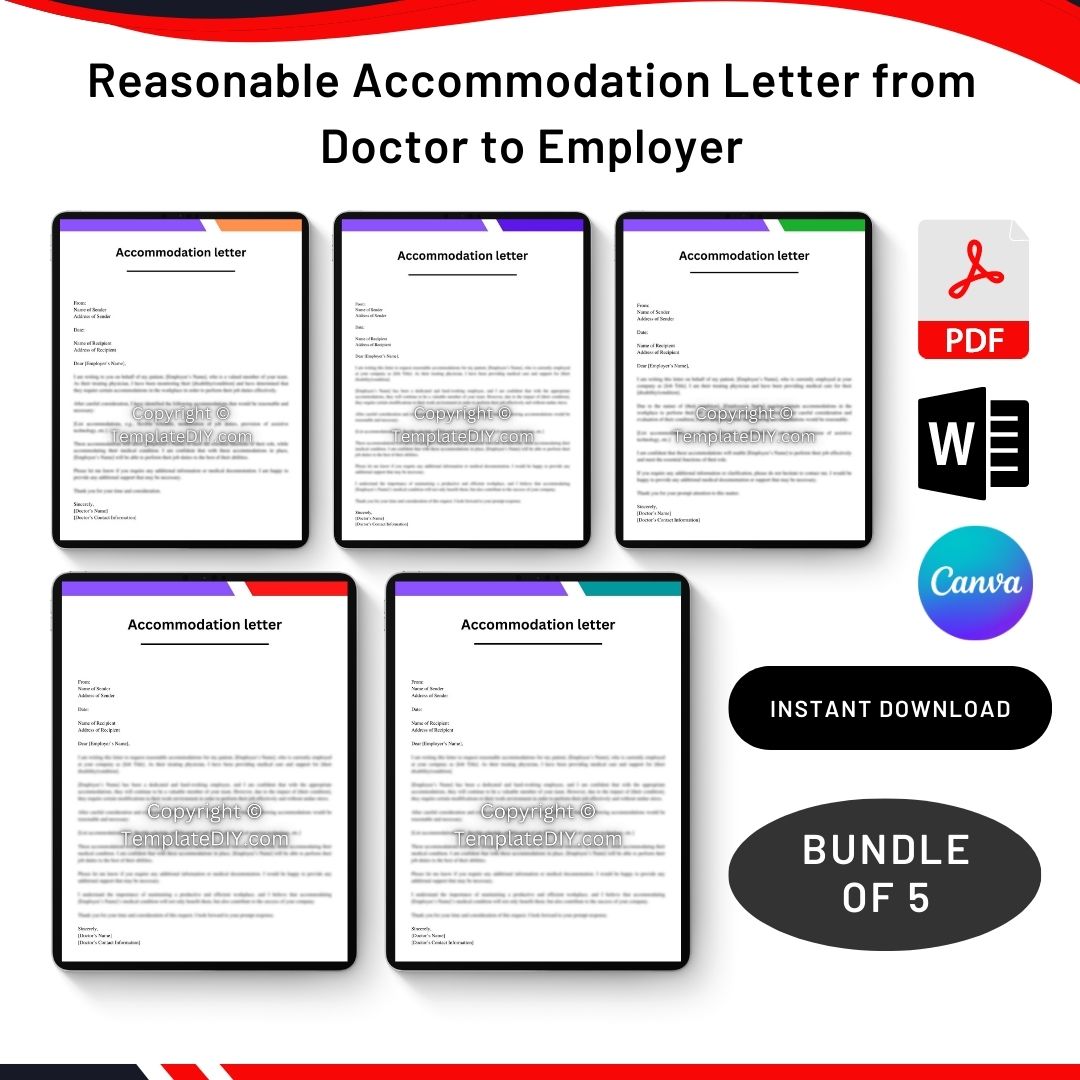
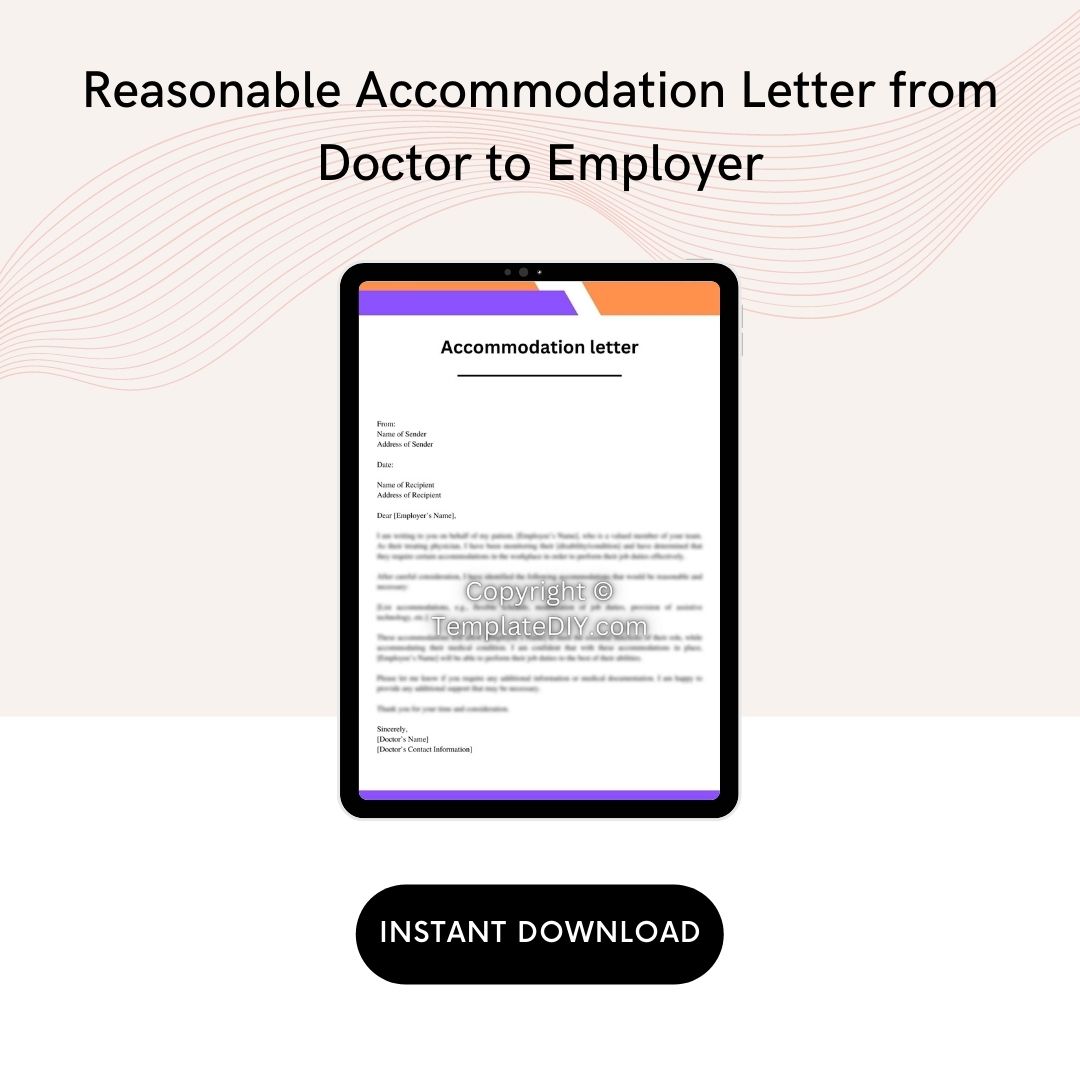
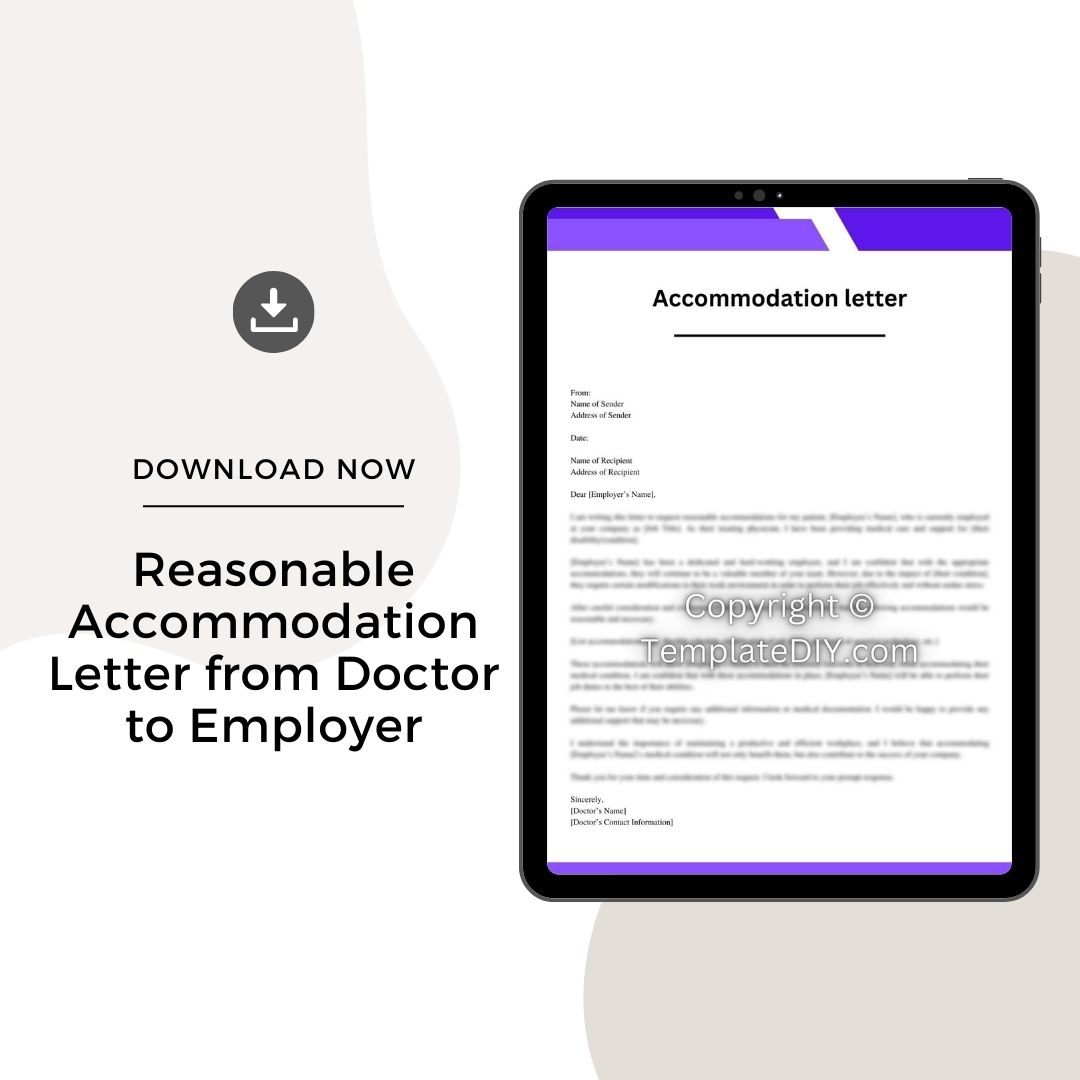
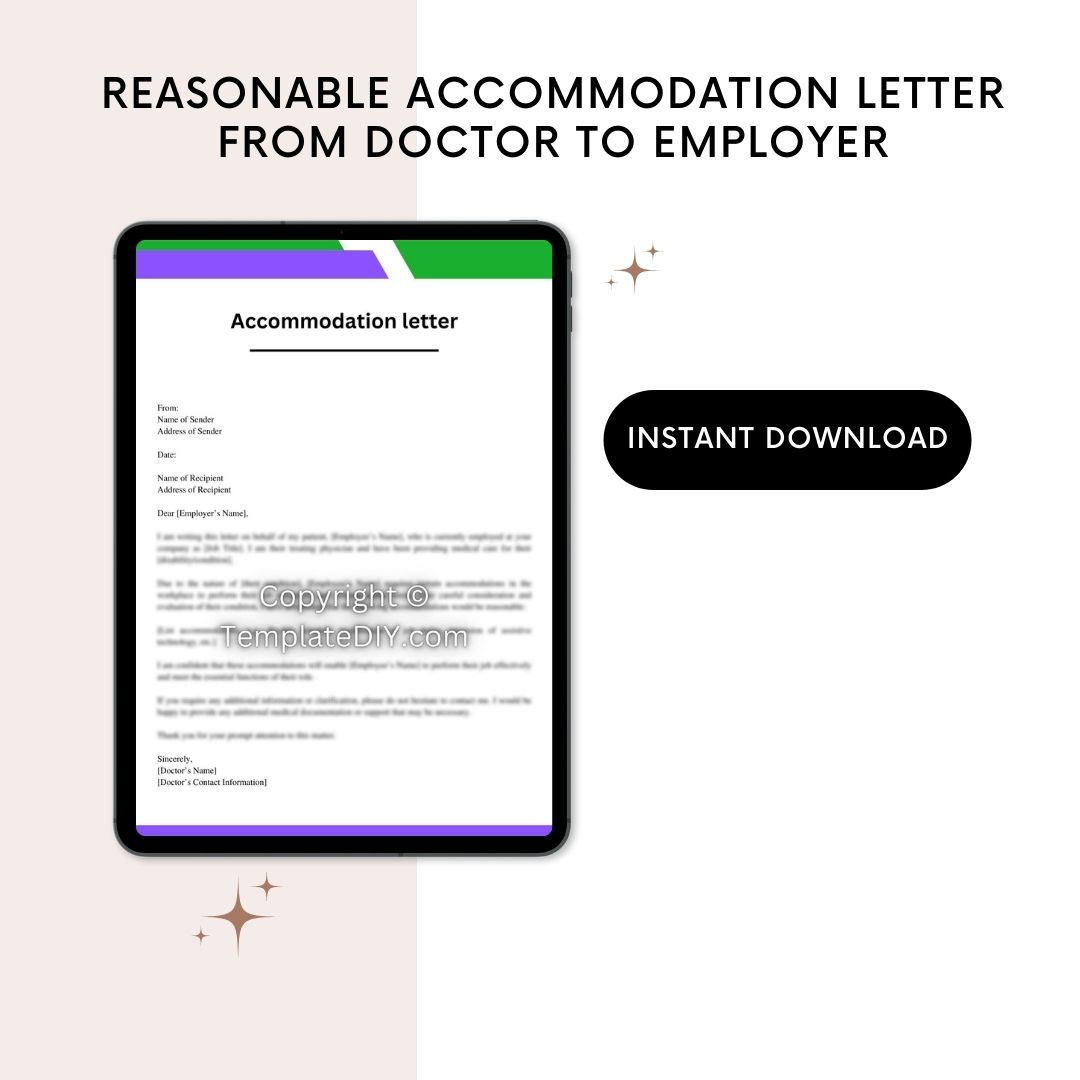
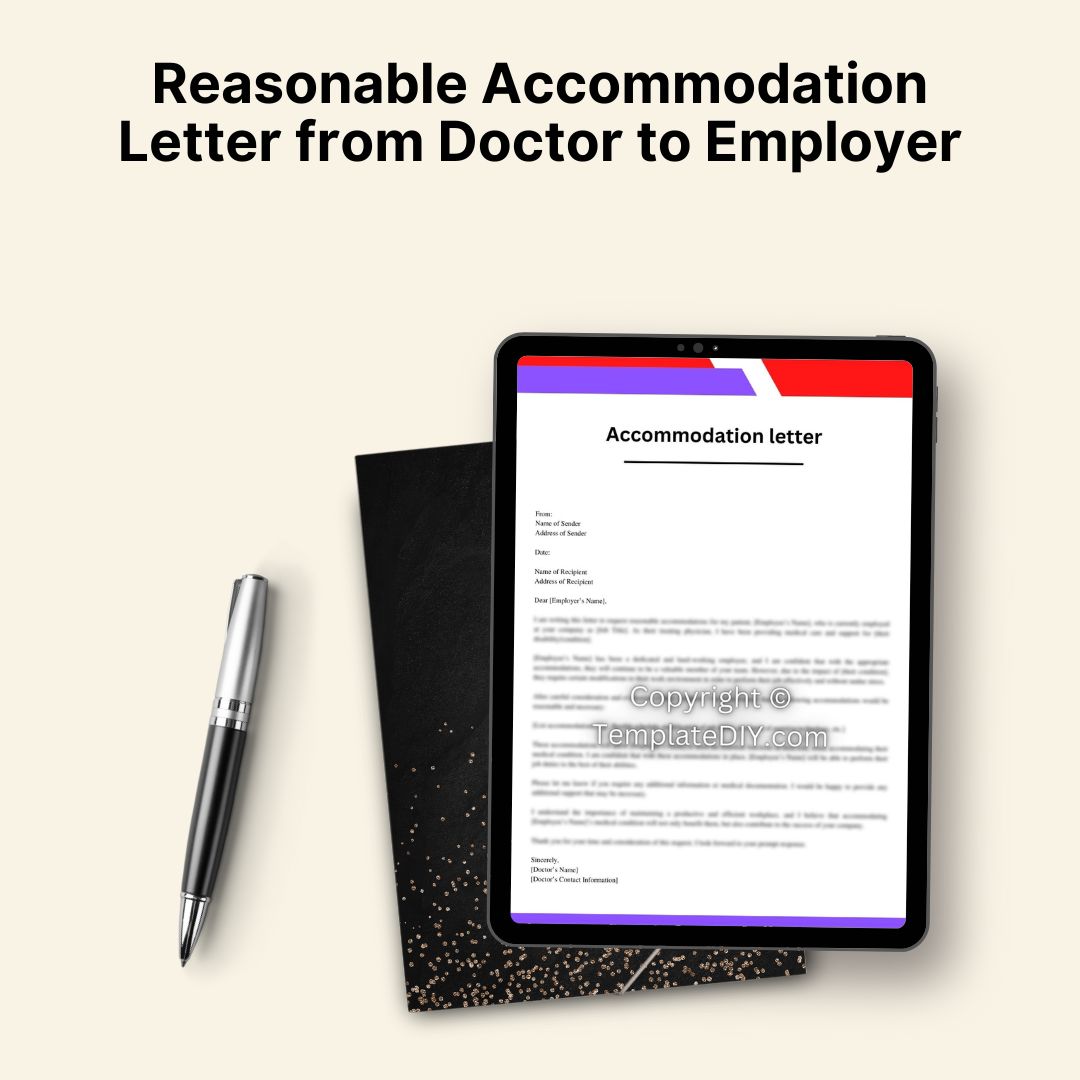
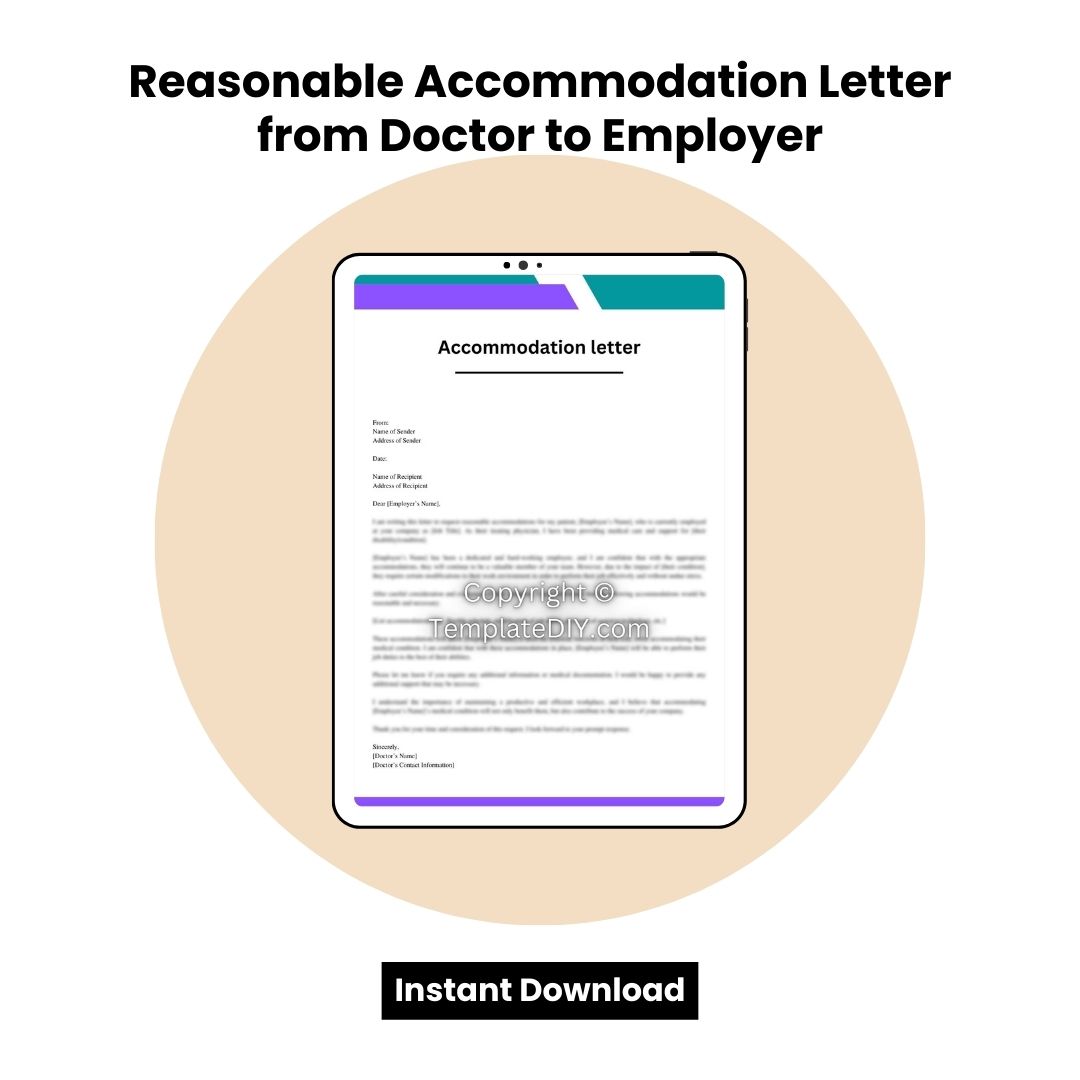
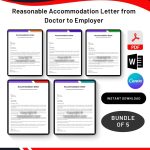
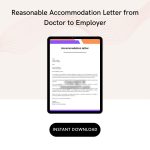
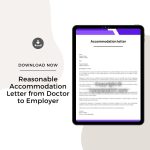
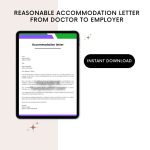
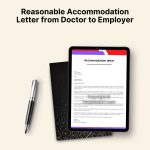

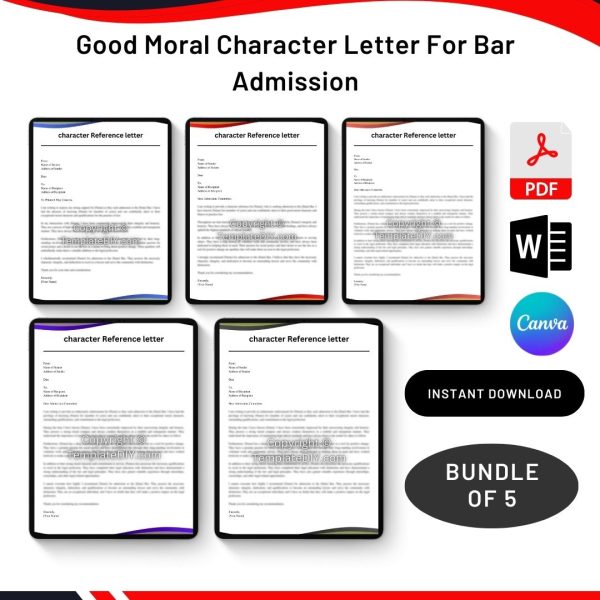


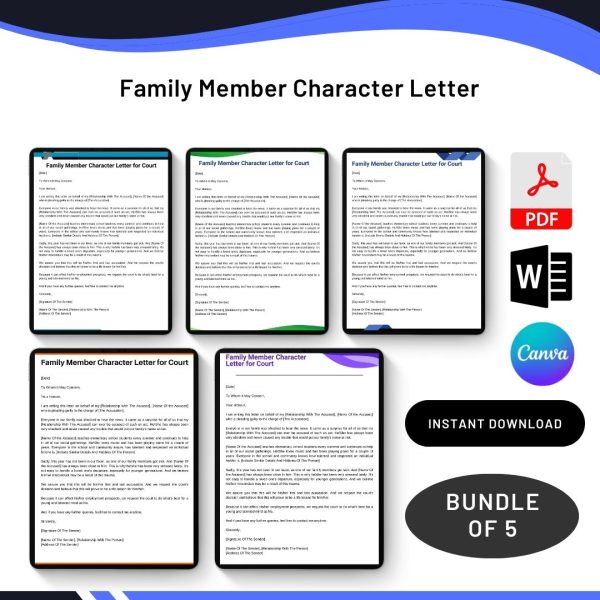


Reviews
There are no reviews yet.